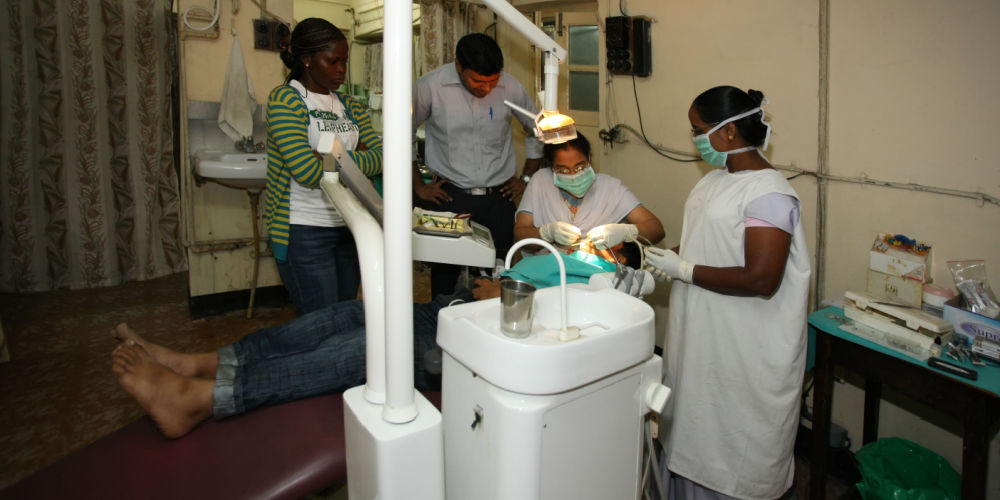
Dental care is an essential part of overall health, yet it often remains an overlooked issue in the developing world. In many low and middle-income countries, dental care is a luxury that is out of reach for the majority of the population. This article discusses the challenges faced by these countries in providing dental care, the consequences of inadequate care, and the possible solutions that can help bridge the gap.
Challenges in Providing Dental Care in the Developing World
- Lack of Access and Infrastructure
One of the primary challenges in providing dental care in the developing world is the lack of access to quality dental services. In many low-income countries, dental care facilities are scarce, particularly in rural areas. This means that many people must travel long distances to receive even the most basic dental care, which is a barrier to timely treatment.
- Insufficient Workforce
Another significant challenge is the shortage of trained dental professionals. Many developing countries do not have enough dentists, dental hygienists, or dental therapists to meet the needs of their populations. This workforce shortage is often a result of inadequate funding and resources for dental education, as well as the migration of dental professionals to more affluent countries in search of better opportunities.
- Financial Constraints
The cost of dental care is a major obstacle for many individuals in the developing world. In many countries, dental services are not covered by public health insurance, forcing patients to pay out-of-pocket for treatment. This can be prohibitively expensive, particularly for low-income families who may already be struggling to afford basic necessities like food and housing.
- Cultural and Educational Factors
A lack of awareness about the importance of dental care and proper oral hygiene practices can also contribute to poor dental health in the developing world. In some cultures, traditional beliefs about oral health may take precedence over modern dental care practices, leading to inadequate care and worsening oral health outcomes.
Consequences of Inadequate Dental Care
The consequences of inadequate dental care in the developing world are both wide-ranging and severe. Poor oral health can lead to a variety of health issues, including:
- Pain and Infection
Untreated dental problems, such as tooth decay and gum disease, can cause significant pain and discomfort. In severe cases, these conditions can lead to tooth loss, abscesses, and life-threatening infections.
- Malnutrition
Poor dental health can make it difficult for individuals to eat, leading to malnutrition and other related health problems. For children, malnutrition can have long-lasting effects on growth and development.
- Systemic Health Issues
Oral health is closely connected to overall health, and poor dental care can contribute to various systemic health issues. For example, research has shown that gum disease is linked to an increased risk of heart disease, stroke, and diabetes.
- Economic Impact
The consequences of inadequate dental care also extend beyond individual health, affecting the broader economy. Lost productivity due to oral health issues can hinder economic development in low and middle-income countries. Additionally, the high cost of treating severe dental conditions can place a significant financial burden on families and healthcare systems.
Solutions for Bridging the Dental Care Gap
Despite the many challenges, there are several potential solutions to help bridge the dental care gap in the developing world:
- Expanding Access to Care
Investing in infrastructure and expanding access to dental care is a crucial step in addressing oral health disparities. This can include building new dental clinics, particularly in rural areas, and implementing mobile dental units to reach remote populations.
- Strengthening the Dental Workforce
Training and retaining dental professionals within developing countries can help to address the workforce shortage. Partnerships with international dental schools and organizations can facilitate training opportunities, while incentives such as loan forgiveness or scholarships can encourage dental professionals to remain in their home countries and serve their communities.
- Integrating Dental Care into Primary Health Care
Integrating dental care into existing primary health care systems can improve access to care and reduce costs. By incorporating oral health screenings and basic dental care into routine primary care visits, more individuals can receive preventive care and early treatment for dental issues.
- Implementing Community-Based Preventive Programs
Community-based preventive programs, such as school-based dental health education and fluoridation of water supplies, can help to reduce the prevalence of dental problems and raise awareness about the importance of oral health. These programs should be culturally sensitive and tailored to the specific needs of the target population.
- Leveraging Technology
Tele-dentistry and other digital health technologies can help bridge the dental care gap in the developing world. By utilizing tele-dentistry, dental professionals can remotely diagnose and monitor patients’ oral health, provide consultations, and develop treatment plans. This can help overcome geographic barriers and improve access to care for underserved populations.
- Encouraging Public-Private Partnerships
Collaboration between governments, non-governmental organizations, and the private sector can help to mobilize resources and expertise to address the dental care gap. Public-private partnerships can be particularly effective in supporting the development of infrastructure, providing training opportunities, and implementing community-based preventive programs.
Conclusion
Dental care is an essential aspect of overall health that cannot be ignored in the developing world. By addressing the challenges of access, infrastructure, workforce, financial constraints, and cultural factors, we can work towards bridging the dental care gap and improving oral health outcomes for millions of people. Investing in dental care not only benefits individual health but also contributes to the economic development and well-being of communities. With the concerted efforts of governments, international organizations, and local stakeholders, it is possible to build a brighter, healthier future for all.
